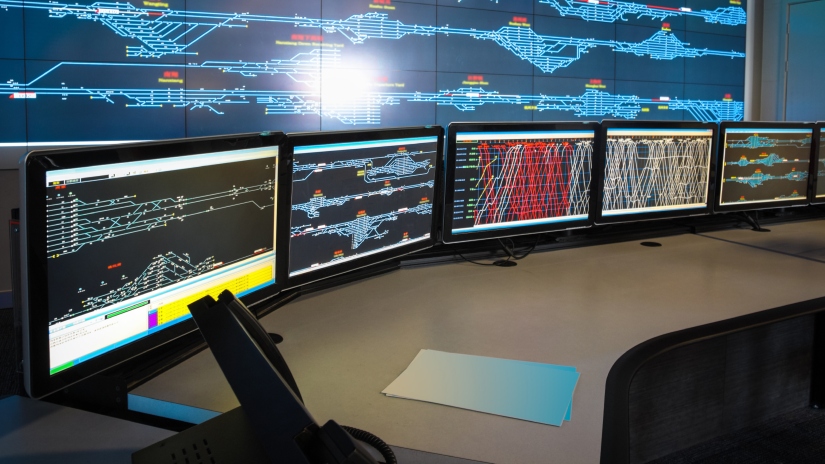By Adelain Grandouiller, CBTC Signaling Leader, Hitachi Rail STS
Each weekday, riders of the Bay Area Rapid Transit (BART) system average 405,000 trips in the California San Francisco Bay Area.1 Remarkably, the train control system managing those trips has been in operation for half a century. Now, as BART prepares to increase its capacity to serve a growing population, it needed to modernize its existing system while safely, reliably and sustainably meeting emerging demand.
To modernize its fleet, BART selected Hitachi’s digital Communications-Based Train Control (CBTC) system to address these challenges. The solution’s flexible fleet management technology will greatly expand the system’s service capacity, and its unique sleep mode capability will enable BART to conserve energy to meet its stringent sustainability targets. The project will be the largest signaling upgrade ever undertaken in North America and the second largest in the world.
Fleet flexibility is a priority for BART, which needs to be able to configure trains for as few as four and as many as 10 cars to meet fluctuations in commuter demand while managing energy consumption. The current fleet includes 465 cars that accommodate passengers only and another 310 cars that have a cabin for the driver in addition to passenger seating. Equipping 775 cars for intercommunication would require a significant investment of time and create needless complexities. As an alternative, Hitachi proposed limiting the communications installation to only cars with a driver’s cabin. This simplified system will make it possible to track each train and collect, monitor and analyze data efficiently without having to do so for each individual car.
The solution will scale not just to the size of the BART fleet, but also to the geographic breadth of the region served. The area is so large that Hitachi is deploying the remote software upgrade in as many as nine phases. This centralized oversight system ensures that, as migration proceeds from one phase to the next, the software update can be pushed to the entire system remotely and seamlessly without the need to perform installations locally in each of the 310 cars with driver cabins. This innovative approach allows for installation, testing, troubleshooting and modifications to proceed in stages without disrupting the existing system or infrastructure. Then, once everything is in place, the software update can be activated across the entire BART territory.

BART officials also imposed strict energy consumption parameters on the project. The sleep mode component of Hitachi’s solution addresses those concerns by providing a means of conserving energy while retaining a baseline of functionality in the CBTC system. The BART parameters specified that when in sleep mode, the onboard system could not consume more than 25 watts.
To meet that performance target, Hitachi is designing an approach that allows for the onboard system to power off completely while still maintaining the train’s localization information. When it is in sleep mode, the train consumes no energy; the wayside is equipped with infrastructure that allows it to assume responsibility for localizing the train during this down time. This approach will allow the onboard system to be powered off completely (resulting in consumption of zero watts). When powered back on again, the onboard system will provide instantaneously full CBTC functionalities, just as if it had not been powered off.

Once implemented, the CBTC system will give BART the capacity to operate 30 ten-car trains per hour per direction through the Transbay Tube during peak transit times, improving energy efficiency and contributing to the sustainability of the system. The digital solution is equipped to operate trains on tighter schedules to achieve a significant increase in throughput. As a result, BART will be able to accommodate a dramatic rise in passenger volume without having to finance construction of an additional transbay tunnel.
A further advantage: Implementation of the solution is expected to create 500 new jobs, and projections suggest that the infrastructure investments have the potential to generate another 8,800 direct and indirect jobs.2 The improvements to mass transit access throughout the region also open up affordable housing options for middle- and lower-income workers, who are considered key constituents of the upgrade and who have been welcomed as stakeholders in development of the plan.
The partnership between Hitachi and BART around this project extends beyond our two organizations. Both Hitachi and BART also value partnership with professionals who will contribute to the project and people whose lives will be touched by it. We have therefore actively developed partnerships with consultants, subcontractors and community representatives — including small, disadvantaged and minority-owned businesses — to ensure that the project’s outcomes will deliver benefits for generations to come.
For more information about Hitachi’s innovative perspective on building 21st-century rail solutions, please visit www.hitachirail.com.

CBTC Signaling Leader, Hitachi Rail STS
Adelain Grandouiller enables the deployment of the CBTC (Communication Based Train Control) technology at Hitachi Rail STS since 2005. Adelain has an accurate knowledge of the CBTC signaling systems and the processes that rules its development. His constant focus on the customer expectation and his pioneering spirit deliver high value to our clients.